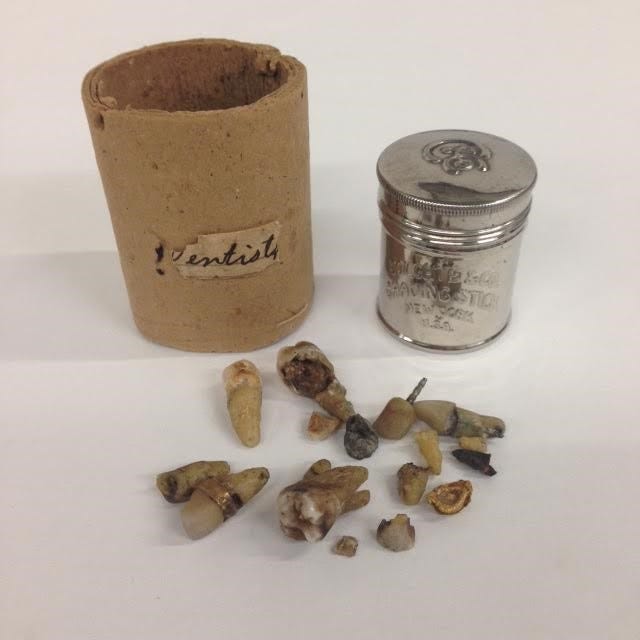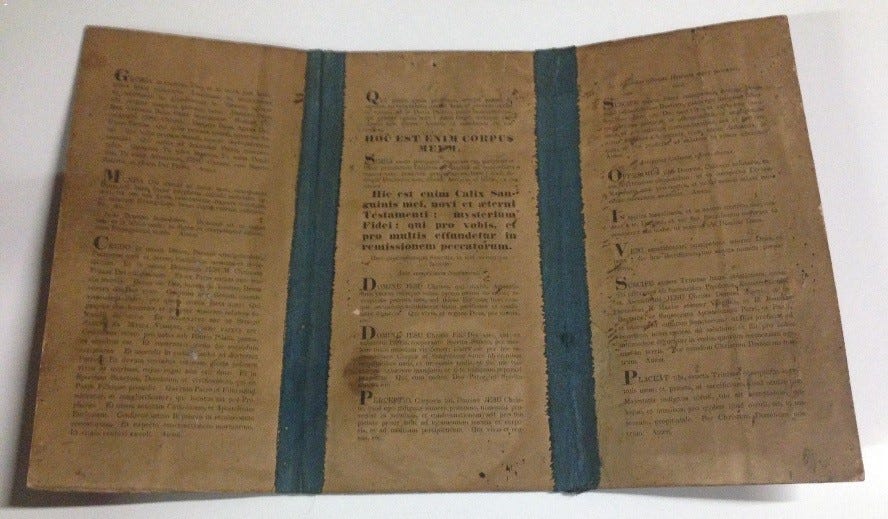“The Amazing Father Lindesmith”
A year ago I traveled to Canton, Ohio to interview Monsignor James Kolp, now 98, for my biography of Army chaplain Edward Vattmann which is nearing completion. Some years ago, the monsignor had written a brief profile of Vattmann, hence the reason for my visit. But from the good monsignor I also learned about another Army chaplain with Ohio connections: Eli W. J. Lindesmith.
Monsignor Kolp, I learned, is the author of The Amazing Father Lindesmith: Chaplain in Indian Country (St. Raphael Center, 2004).
Here are a few things I learned about Lindesmith (1827-1922):
His parents named him Eli Washington John Lindesmith - after a prophet, a president, and an apostle.
As a seminarian in 1849 he was the official local escort for Father Theobald Mathew, the Irish temperance priest, while he made his speaking rounds.
He was the first Ohio-born to be ordained to the priesthood (1855).
Lindesmith baptized Kolp’s grandfather on April 23, 1859.
After several years serving Ohio missions, on July 1, 1880, at age 52, he received his military commission from President Rutherford Hayes - the first Catholic chaplain to serve in the army following the Civil War.
He spent most of the next eleven years in Montana at Fort Keough.
His ministry extended beyond the soldiers and to Native American members of the Sioux and Cheyenne tribes.
After his military service ended, he returned to parish & mission work in Ohio.
Father Lindesmith was interested in preserving Native American culture and traditions, and in reminding church authorities of the need to bring the Gospel to them. In order to promote that, he sent Indian artifacts to Bishop Gilmour of Cleveland. Through Bishop Gilmour he sent a buffalo robe to Pope Leo XIII.
Lindesmith saved many artifacts from his time in the west - most are held in the archives of the Catholic University of America. In 2016 the university lent a number of these to the Knights of Columbus Museum in Connecticut for its exhibit “Mission of Faith: The Coming of the Gospel to America.” One of the more surprising of these were his own teeth.
His reason for saving his pulled teeth? “I want to show the dentists some of their good work … and some of their bad work!”1
Less surprising - and more inspiring - were his altar cards.
Purchased early in 1855, Lindesmith used them to practice celebrating Mass as a seminary student and continued to use them for fifty-two years. Noting their stained and time-worn appearance, he explained: “Long ago I could have got better cards, but these were handy, and I was attached to them and would not exchange them for the best that could be got.”2
Lindesmith died on February 6, 1922, aged 95. He spent his last days at St. Ann Maternity Hospital in Cleveland where he had served as chaplain for fourteen years. In his will he had directed that his body be taken to Dungannon (Ohio) for his funeral Mass and burial. His body was taken in the hearse from the hospital to the train station for transfer to Dungannon. As the hearse neared the station, the train pulled out without him. The funeral director wheeled the hearse around and took his casket back to St. Ann’s. The story goes that the good nun who had looked after him in his dying days happened to look out the window and seeing the hearse coming back, cried out, “Oh my God, here he comes again!”3
Monsignor Kolp’s book is out of print, but I have seen it on several used book websites.
The Archivist’s Nook: A Montana Missionary – His Life and Teeth – What’s Up (cua.edu)
Ibid.
The Amazing Father Lindesmith: Chaplain in Indian Country, p. 199.






